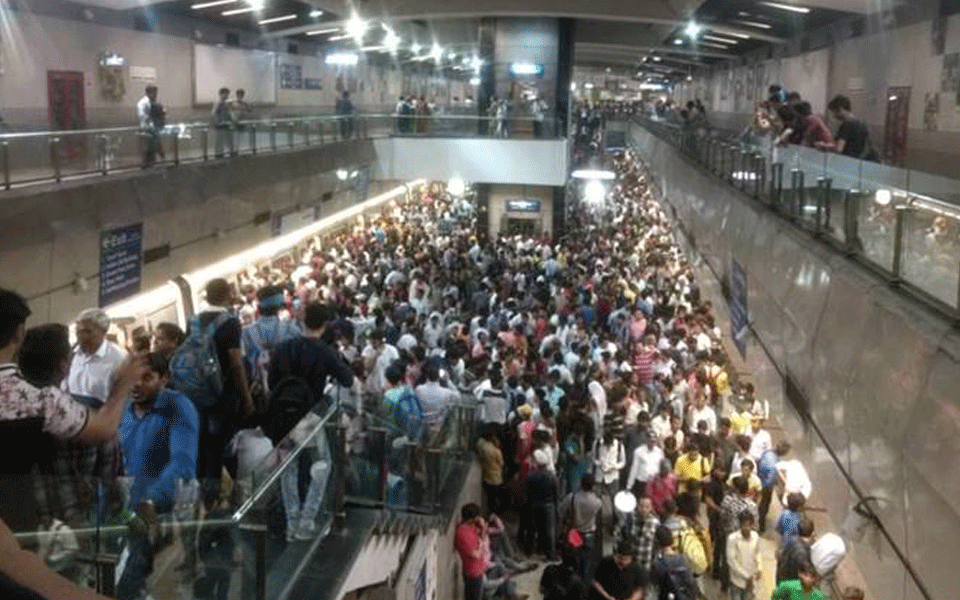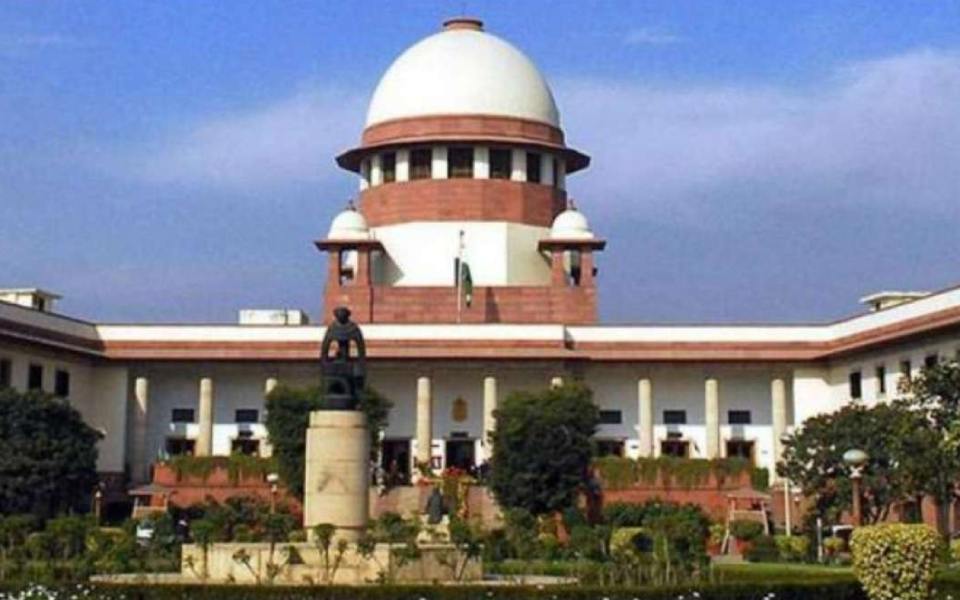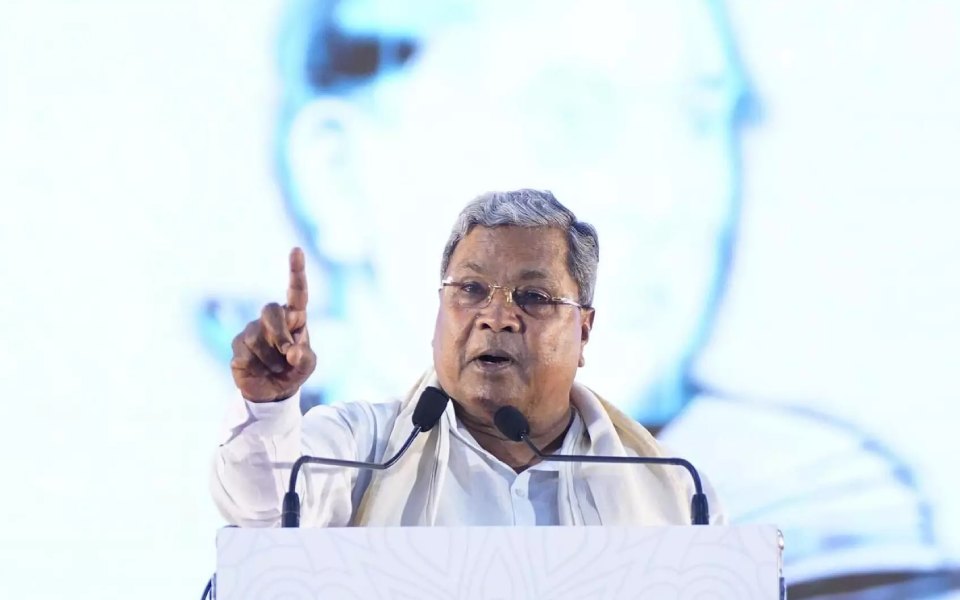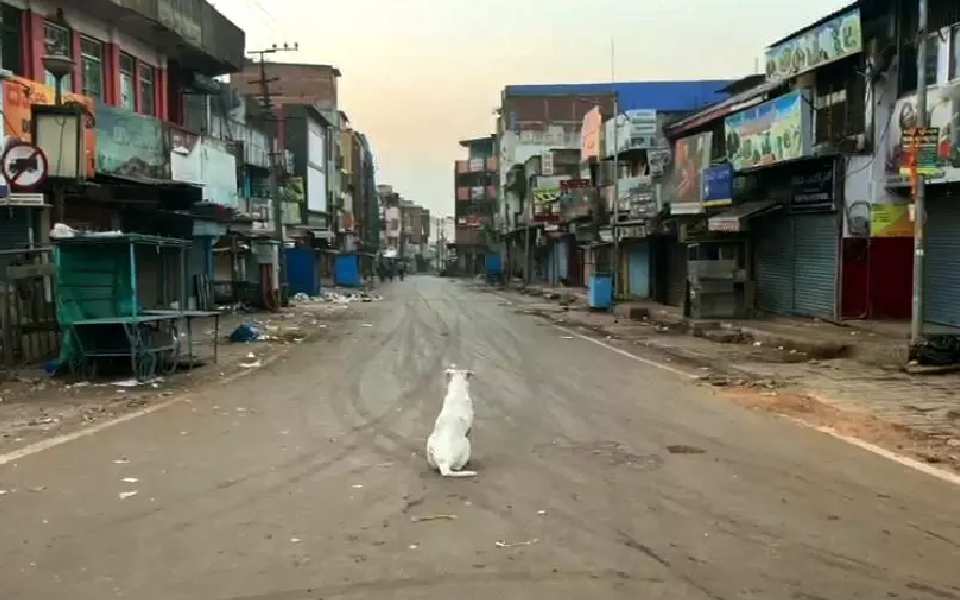New Delhi, May 13: A powerful dust storm accompanied by rains on Sunday evening brought down the temperature in the national capital and adjoining areas, seriously disrupting air traffic and Metro services, officials said.
As the storm blew at a highest speed of 70 km per hour, the mercury crashed from 39 degrees Celsius at 4 p.m. to 25 degrees half hour later, the India Meteorological Department (IMD) told IANS. By early evening, the skies had turned dark.
Power supply was affected in many areas in Delhi and Gurugram in Haryana.
More than 40 incoming flights to the Indira Gandhi International Airport were diverted between 4.15 and 5.30 p.m. due to poor visibility and strong winds, an airport official said.
Delhi Metro operations were also hit. Thousands of commuters were stuck on the winding and busy Blue Line, which links Dwarka in west Delhi to Noida and Vaishali in Uttar Pradesh, for more than 45 minutes.
The Violet Line, one of the six lines of the Delhi Metro that connects Kashmere Gate in north Delhi to Escorts Mujesar in Faridabad in Haryana, was also disrupted.
In both cases, toppling trees fell and damaged overhead Metro wiring, an official spokesman said.
When the Metro services finally resumed after around two hours, the trains plied at halting speed.
The rains and storm brought down trees and tree branches in some areas and led to traffic snarls, forcing two-wheeler drivers to take shelter under bridges and flyovers. Motorists switched on headlights to find their way in the enveloping darkness.
The Delhi Fire Service said it received over 30 calls linked to falling trees and two calls related to wall collapse within two hours of the storm hitting the national capital. But no casualty was reported.
The dramatic change in weather, however, did bring respite to residents from the sweltering heat.
The Met department had forecast rain and thunderstorm with gusty winds on Sunday.
Mahesh Palawat, Director of the private weather forecast agency Skymet, told IANS that the change in weather was due to western disturbance which reached Jammu and Kashmir and Himachal Pradesh on Saturday evening.
"A cyclonic circulation formed near Haryana and north Rajasthan along with the western disturbance. South-easterly and easterly winds are creating moisture and high temperature in the region which caused the formation of thunder clouds. The strom blew over a trough which is spread from north Rajasthan and Uttar Pradesh.
"Delhi falls within the trough, but now this will move towards western Uttar Pradesh. There is a likelihood of light rains with thunder towards the afternoon or evening for two more days. Westerly winds will form again and temperature will begin to rise after May 15," Palawat said.
Just after the dust storm hit Delhi and the National Capital Region, Delhi, Gurugram and Noida received heavy to moderate rains.
The Met official said Sunday morning was the hottest of the season, with minimum temperature recorded at 30.6 degrees Celsius, five notches above the season's average.

Let the Truth be known. If you read VB and like VB, please be a VB Supporter and Help us deliver the Truth to one and all.
New Delhi, Jan 9: The Supreme Court on Thursday dismissed a batch of pleas seeking to review its October 2023 verdict declining legal sanction to same-sex marriage.
A five-judge bench of Justices B R Gavai, Surya Kant, B V Nagarathna, P S Narasimha and Dipankar Datta took up about 13 petitions related to the matter in chambers and dismissed them.
"We do not find any error apparent on the face of the record. We further find that the view expressed in both the judgements is in accordance with law and as such, no interference is warranted. Accordingly, the review petitions are dismissed," the bench said.
It said the judges have carefully gone through the judgements delivered by Justice (since retired) S Ravindra Bhat speaking for himself and for Justice (since retired) Hima Kohli as well as the concurring opinion expressed by Justice Pamidighantam Sri Narasimha, constituting the majority view.
The bench also rejected a prayer made in the review petitions for hearing in an open court.
According to practice, the review pleas are considered in chambers by the judges.
The new bench was constituted after Justice Sanjiv Khanna, the present CJI, recused from hearing the review petitions on July 10, 2024.
Notably, Justice P S Narasimha is the only member of the original Constitution bench comprising five judges which delivered the verdict, as former CJI D Y Chandrachud and Justices S K Kaul, Ravindra Bhat and Hima Kohli have retired.
A five-judge Constitution bench led by then CJI Chandrachud on October 17, 2024, refused to accord legal backing to same-sex marriages and held there was "no unqualified right" to marriage with the exception of those recognised by law.
The apex court, however, made a strong pitch for the rights of LGBTQIA++ persons so that they didn't face discrimination in accessing goods and services available to others, safe houses known as "garima greh" in all districts for shelter to members of the community facing harassment and violence, and dedicated hotlines in case of trouble.
In its judgement, the bench held transpersons in heterosexual relationships had the freedom and entitlement to marry under the existing statutory provisions.
It said an entitlement to legal recognition of the right to union, akin to marriage or civil union, or conferring legal status to the relationship could be only done through an "enacted law".
The five-judge Constitution bench delivered four separate verdicts on a batch of 21 petitions seeking legal sanction for same-sex marriages.
All five judges were unanimous in refusing the legal recognition to same-sex marriage under the Special Marriage Act and observed it was within Parliament's ambit to change the law for validating such a union.
While former CJI Chandrachud wrote a separate 247-page verdict, Justice Kaul penned a 17-page judgement where he broadly agreed with the former's views.
Justice Bhat, who authored an 89-page judgement for himself and Justice Kohli, disagreed with certain conclusions arrived at by the former CJI, including on applicability of adoption rules for such couples.
Justice Narasimha in his 13-page verdict was in complete agreement with the reasoning and conclusion of Justice Bhat.
The judges were unanimous in holding that queerness was a natural phenomenon and not an "urban or elite" notion.
In his judgement, the former CJI recorded Solicitor General Tushar Mehta's assurance of forming a committee chaired by the cabinet secretary to define and elucidate the scope of entitlements of such couples in a union.
The LGBTQIA++ rights activists, who won a major legal battle in 2018 in the Supreme Court, which decriminalised consensual gay sex, moved the apex court seeking validation of same-sex marriages and consequential reliefs such as rights to adoption, enrolment as parents in schools, opening of bank accounts and availing succession and insurance benefits.
Some of the petitioners sought the apex court to use its plenary power besides the "prestige and moral authority" to push the society to acknowledge such a union and ensure LGBTQIA++ persons led a "dignified" life like heterosexuals.





